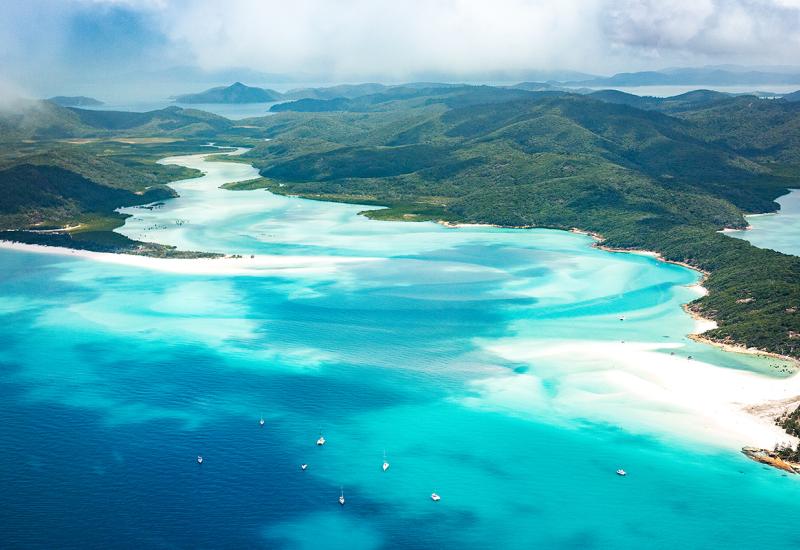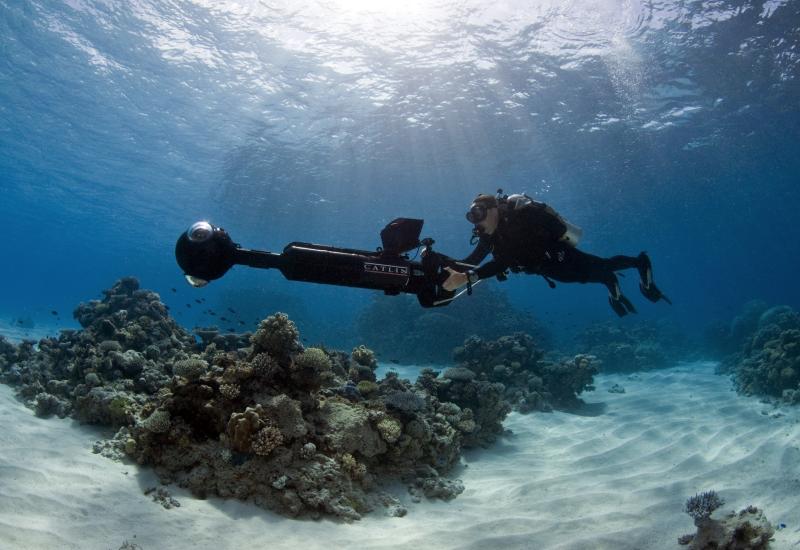Indonesia
Fires. Drought. Civil unrest. Bad times out in the Pacific. Better steer clear of the place, right? Wrong. For a traveling diver, Indonesia is safer than milk, and right now it is, dollar for dollar, the best diving bargain in the world, bar none. In case you're not aware of it, the far western Pacific is home to more species of marine creatures than any place else in the world - eight times the number of corals as the Caribbean and four times the number of fish. If all you've ever dived is the Caribbean, you better bring along a supply of tranquilizers. It is uncontested that Indonesian diving ranks among the finest diving in the world, but it also is true that the country has been making headlines over the past year for events that have nothing to do with diving - a string of natural and political disasters. Visitors have stayed away in droves, but as a tourist and a diver, these events, horrendous as they may be, actually work in your favor. Many of the country's hotels stand empty, and dive operators are begging for bookings. It's a buyer's market in a country whose sagging economy already makes it the bargain of the year for international travelers. Indonesia is a large country. It covers an area of the globe roughly equivalent to that of the United States but is scattered across the western Pacific in a series of island archipelagos. Bali and Nusa Tenggara Bali has dive sites galore, including probably hundreds that have never even been dived. Most of Bali's development is along the South and East Coasts, and this is where most of the diving occurs. There are some fine dives here, including good warm-up or beginner dives, but it's not the best Bali has to offer. The small island of Nusa Penida, a short boat ride off Bali's southeast coast, offers some high-voltage dives, but strong and unpredictable currents make this a place for experienced divers only. Bali is watered by warm, moist winds from the south. The entire south slope of its mountainous terrain is cut with deep canyons and tumbling streams, and more often than not, its volcanic peaks are lost in the mists. On the north slope, where the clouds have been wrung dry, there are no lush green rice terraces, but there is some of the finest diving on the island. The wreck of the Liberty, a WWII-era cargo ship, is justifiably one of Bali's most visited dive sites. This is a shore dive - the wreck lies only about 100 feet offshore - and conditions and location make it a good dive for beginners as well as a good night dive. The far west of the North Coast offers the best diving on Bali. Conditions are good year-round, but especially good March to May and September through January. Visibility is excellent, and there is very little current. Some of the best sites here are around little Menjangan Island. It's a long haul from the more conventional tourist areas of the south, but if you've come to dive, it's well worth it. The archipelago stretching east from Bali to Timor is known as Nusa Tenggara. There are hundreds of islands in this chain including Komodo Island - home of the legendary Komodo dragon. The diving out here is fantastic, and the best way to experience it is through a stay on a live-aboard.Manado As different as Bali is from Java, the city of Manado on the northern tip of Sulawesi is another world away, but this one will seem a lot more familiar. For North Americans, Manado is probably more like home than any other place in Indonesia. You won't see the squalor and poverty you'll see in many other Indonesian cities since the people of Manado are largely prosperous and middle-class. But, underwater you will find it unlike anything anywhere near North America. Five small offshore islands make up the Bunaken-Manado Tua National Marine Park. The centerpiece is the nearby, crescent-shaped isle of Bunaken. Coral reef completely encircles Bunaken, and it is characterized by steep, near-shore walls honeycombed with caves and overhangs. The current is usually quite gentle, making it a good place for beginners. No less than 13 dive sites surround this tiny island, and they're all good. Four other islands are included in the marine park: Siladen, Manado Tua, Montehage and Nain. All have good diving, though not as many sites. If it gets too crowded around Bunaken, ask the local operator to take you to one of these other islands. Not far from Manado, on the opposite side of the northern Sulawesi peninsula, lies the Lembeh Strait, another terrific diving spot. Kukungan Bay Resort runs a first-rate dive operation here. The strait is protected from the prevailing winds, and the currents funnel in a rich feast of plankton, giving rise to a diverse population of rare and unusual marine life. Because of the plankton, the visibility isn't as stunning as it is in other Indonesian sites, but it's still good (generally 40 to 60 feet), and the richness of the waters make it a more than acceptable trade. There is also a nice wreck across the strait from the resort and excellent dive sites right out in front. There are plenty of great dives here for beginners and experienced divers alike. Not a lot of big pelagics, but possibly more small and exotic species than you'll find anywhere else in the world.Maluku If you're hankering for something more isolated than the sites around northern Sulawesi, consider heading farther east to the waters of Maluku, around Ambon and the Lease Islands, or farther south to the tiny and isolated Banda Islands. Ambon is the capital of the province of Maluku, and world-class sites are just a short boat ride away. There are a number of spectacular sites along the southern coast of Ambon Island's Leitimur peninsula. Visibility here is almost always excellent and the current moderate to nonexistent - great diving for anybody and particularly friendly to beginners. East of Ambon lies the island of Haruku, of little interest to divers. Saparua, east of Haruku, is another story. Saparua Island is indented with two offset triangular bays that dominate the island's northern and southern coasts. It is graced with several good sites, but the best one is off a tiny islet just to the southeast of the island's western peninsula. Conditions here are excellent and diver-friendly, as they are on Ambon, but the fish life is probably a little better. Nearby Saparua Bay also makes an excellent location for night dives. Perhaps the best dives in the Lease Islands are around Nusa Laut, the small island that is farthest east. There are several sites along its eastern coast, all similarly fantastic: great coral growth, both soft and hard, and lots of fish, including many rare and exotic species. I've heard claims of big pelagics, but I didn't see any when I was there. Visibility is excellent, but the current is quite variable - a calm morning dive can give way to a ripping current in the afternoon. The Bandas are among Indonesia's most remote islands and perhaps the most picturesque. The pristine reefs and variety of conditions make them some of the country's best and most overlooked dive destinations. The Bandas are made up of six major islands and a few smaller ones clustered around the central island and town of Banda Niera in the shadow of the very active volcano Gunung Api. The two are separated by a narrow channel, which boasts several dive sites just minutes from the hotel. Southeast of these two islands is Lontar Island, where the majority of the area's dive sites are found. Lontar, the rim of an ancient, sunken caldera, is characterized by steep drop-offs crowded with dense coral growth and huge sponges teeming with fish. Scattered a little farther from the central islands are the islands of Run, Ai to the west and Hatta to the east. Hatta and Ai probably offer the Banda's best diving. Beautiful coral walls that are honeycombed with caves teem with enormous schools of fish, giant soft coral trees, huge schools of barracuda, turtles, eels and reef fish of every color and stripe - it's all here.Borneo No discussion of diving in Indonesia would be complete without some mention of Sangalaki Island. Sangalaki is a tiny island lying to the east of Borneo, one of the world's largest islands. These islands feature great coral cover and tremendous diversity and numbers of marine life both great and small. Among the most popular is Sangalaki's famous population of mantas. They are seen on almost every dive and frequently spotted feeding at the surface from the dive boat. But there is also tremendous diversity of invertebrates and other fish life. Another of Sangalaki's famous visitors are the green sea turtles that nest on its beaches and breed in the offshore waters. Indonesia has enough diving adventures to keep you occupied for years. The Western Pacific is a long way away, but if you're a dedicated diver, sooner or later you have to make the trip to see for yourself the best diving on the planet. If the price tag has been holding you back, this might be the time to start packing your dive bag and heading to the bookstore for a Bahasa phrase book. When you get it, look this one up: Selamat berjalan!










